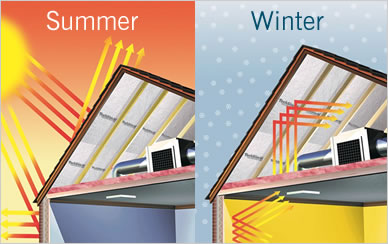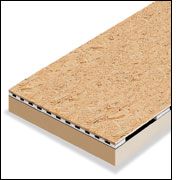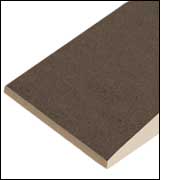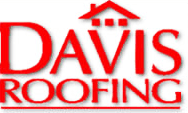Radiant Barrier Decking
SAVE ENERGY, MONEY AND MORE.
Radiant barrier is an aluminum foil product installed in buildings to minimize heat gain in the summer and heat loss in the winter, reducing the amount of energy needed for heating and cooling.
 Periodic table of elements – 13: Al, 26.982A radiant barrier, according to ASTM standards, must have an emittance value (a measure of the energy radiated by a surface) of less than 0.1. Aluminum is one of the most effective radiant barriers because it’s a good heat reflector and a poor heat radiator.
Periodic table of elements – 13: Al, 26.982A radiant barrier, according to ASTM standards, must have an emittance value (a measure of the energy radiated by a surface) of less than 0.1. Aluminum is one of the most effective radiant barriers because it’s a good heat reflector and a poor heat radiator.
A layer of aluminum foil placed in an air space reflects thermal radiation, prevents up to 97 percent of the radiant heat in the panel from radiating into the attic.

- Summer: Radiant Heat from the sun penetrates the roof and walls of a house in the summer, but a radiant barrier blocks that radiant heat from entering the home.
- Winter: In the winter, a radiant barrier keeps indoor heat from escaping through the roof and walls and reflects it back into the house. As a result, your house stays cooler in the summer and warmer in the winter.
GO GREEN!
More and more people are building green these days, and that’s good news — for the environment and for all of us. The goal of green building is to reduce or eliminate the negative impact of buildings on the environment and the people in them.
 EarthBuildings have a major impact on the environment. According to the U.S. Green Building Council, buildings (both commercial and residential) account for 65.2 percent of total electricity consumption in the U.S., and 30 percent of total U.S. greenhouse gas emissions. They also account for more than 36 percent of total U.S. primary energy use and 12 percent of potable water use.
EarthBuildings have a major impact on the environment. According to the U.S. Green Building Council, buildings (both commercial and residential) account for 65.2 percent of total electricity consumption in the U.S., and 30 percent of total U.S. greenhouse gas emissions. They also account for more than 36 percent of total U.S. primary energy use and 12 percent of potable water use.
Several design and construction practices can help reduce the impact of buildings on the environment. LP® TechShield® Radiant Barrier is an energy-efficiency measure that can make a big difference. Because it blocks heat from entering the home during warm months and keeps heat from escaping during colder months, less energy is required for heating and cooling. Reducing energy use results in decreased carbon emissions and a healthier environment.
Frequently Asked Questions
What is a radiant barrier?
Radiant Barrier is a highly reflective, low emitting material installed at the underside surface of the roof deck and the inside surface of gable ends or other vertical surfaces in attics to reduce solar heat gain into the attic.
What is TechShield Radiant Barrier Sheathing?
TechShield uses a unique patented process to laminate a thin, yet durable sheet of aluminum overlay to the surface of LP Oriented Strand Board (OSB).
Can TechShield be used as a substitute for attic insulation?
No. TechShield is intended to work with standard insulation, enhancing its heat resistant properties by reducing the amount of radiant heat transferred from the roof to the attic insulation.
How soon can homeowners expect a return on their investment?
Homeowners will begin to see a return on their investment immediately in terms of greater comfort and reduced energy usage. Payback will vary depending upon weather conditions, use of other energy-efficient building products, regional energy prices and thermostat settings. TechShield will continue to save energy for the life of the home.
Will heat build up in the roof and damage my shingles?
No. The Florida Solar Energy Center has measured the temperatures of roof shingles above radiant barrier sheathing. Depending on the color of the shingles, their peak temperatures are only 2-5 degrees higher than the temperatures of shingles under the same conditions without a radiant barrier.
TechShield installation should not affect shingle warranties. LP has received warranty statements from Elk, GAF, Celotex, Owens Corning, Certainteed, and Tamko that allow the use of TechShield as roof decking without affecting their shingle warranties as long as the shingles are installed according to their installation instructions. Please refer to your shingle warranty for specific details.
For additional information on this topic, refer to Technical Bulletin #103 as issued by the Radiant Insulation Manufacturers Association.
How do radiant barriers “block” heat?
The aluminum radiant barrier has two properties that enable it
to effectively block heat: emissivity and reflectivity. Aluminum’s low
emissivity allows it to prevent up to 97% of the radiant heat in the
panel from radiating into the attic. Its high reflectivity allows it
to help block heat from your living space from escaping through your
roof deck to the outside.”
How soon can homeowners expect a return on their investment?
Homeowners will begin to see a return on their investment immediately
in terms of greater comfort and reduced energy usage. Payback will
vary depending upon weather conditions, use of other energy-efficient
building products, regional energy prices and thermostat settings.
Once installed, TechShield keeps on saving energy.
INSTALLATION
Are there any special installation requirements for TechShield Radiant Barrier Sheathing?
No. In fact, TechShield requires less time and labor to install than loose radiant barriers because the radiant barrier is already applied to the decking material. No special tools or additional construction steps are required.
The radiant barrier side of the roof sheathing is placed face down, toward the interior of the attic. There must be at least a 3/4″ air space between the aluminum layer and other products such as insulation.
What are the benefits of radiant barriers in attics?
The primary benefit of attic radiant barriers is in reducing air-conditioning cooling loads in warm or hot climates. When solar energy is absorbed by the roof, heat from the roof sheathing and framing radiates downward toward the attic floor, through the insulation and framing and into the living areas of the home. TechShield Radiant Barrier Sheathing prevents up to 97% of attic radiant heat gain through the panel, keeping attic temperatures significantly cooler.
What are the benefits of TechShield Radiant Barrier Sheathing?
- Prevents up to 97% of the radiant heat in the panel from radiating into the attic.
- Reduces attic temperatures by as much as 30°.
- Reduces energy consumption for cooling by as much as 17%.
- Increases comfort level of the home.
- May add resale value to the home.
- No additional labor to install
Decking Options
AC Foam® CrossVent™ ![]()


Environmentally Friendly “Green” Polyiso Insulation
Patented ACFoam CrossVent insulation consists of a thermally efficient polyiso insulation board with 1.0″, 1.5″ or 2.0″ vent spacer strips separating 7/16 in. APA/TECO rated OSB from the polyiso foam insulation to create a cross ventilating airspace. CrossVent combines the desirable benefits of a nailable surface and insulation with the addition of a cross ventilating airspace. CrossVent is made to order in 4´ x 8´ (1220mm x 2440mm) size panels and in nominal thicknesses of 2.5″ to 6.5″. Non-Standard vent spaces are available on special order.
Recommended Uses
ACFoam CrossVent has been designed for use over sloped unventilated roof decks. Slopes must be appropriate for the type of roof system specified. The primary purpose of CrossVent is to provide a thermally efficient insulation with uniform cross venting that promotes air circulation required by many shingle manufacturers. CrossVent allows heat to dissipate while providing a nailable surface and efficient insulation in a one-step labor saving process.
AC Foam®– II 

Environmentally Friendly “Green” Polyiso Insulation
Tapered ACFoam II features ACUltra Technology which means ZERO HCFC´s – a cost effective “Green” building solution. Excellent R-Values reduce energy demands while maintaining compatibility with all types of roofing membranes and fire assemblies. Tapered ACFoam II is manufactured in a tapered profile to attain positive drainage while maintaining the highest thermal efficiency available in a tapered system.
In 1998, years ahead of the Environmental Protection Agency timetable for eliminating HCFCs (hydrochlorofluorocarbons), Atlas introduced a line of ACFoam Products that are environmentally sensitive and available for virtually every type of construction system. Through a patented hydrocarbon blowing technology called ACUltra, Atlas began the phaseout of HCFCs in the manufacturing of foam insulation and anticipates the complete removal of HCFCs from all Atlas foam products within the next year.
Recommended Uses
Tapered ACFoam is specified for use in hot asphalt or coal tar BUR, modified bitumen and single-ply membrane systems. Tapered ACFoam is manufactured in a tapered profile to attain positive drainage while maintaining the highest thermal efficiency available in a tapered system. Tapered ACFoam is also available in 25-psi formula. Available in 4´ x 4´ (1220mm x 1220mm) only.
